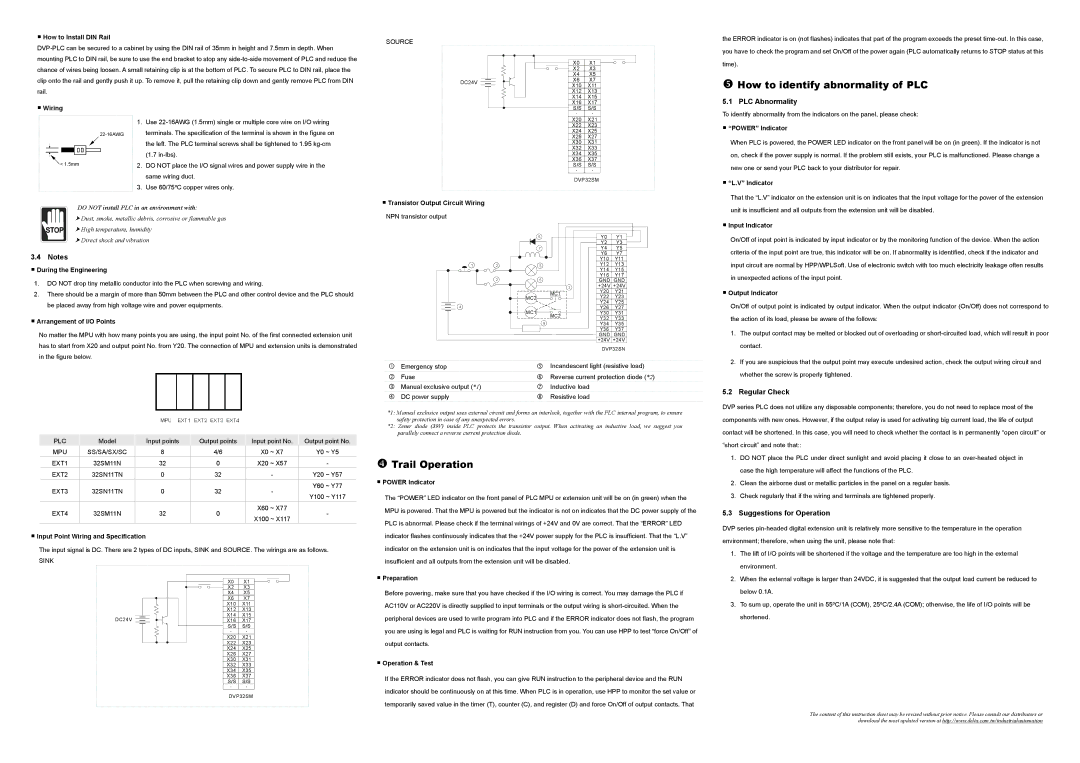DVP-Slim specifications
Delta Electronics DVP-Slim series is a prominent line of programmable logic controllers (PLCs) designed for versatile applications in industrial automation. With its compact and streamlined design, the DVP-Slim series is engineered to meet the growing demands of industries looking for efficient and reliable control solutions.One of the standout features of the DVP-Slim is its ultra-compact size, which allows it to be easily integrated into tight spaces. This space-saving design does not compromise functionality, as the DVP-Slim series supports a wide range of input and output modules. It offers various configurations, including discrete, analog, and relay outputs, catering to diverse application needs.
The DVP-Slim PLCs come equipped with advanced processing capabilities. They utilize a powerful CPU that delivers fast processing speeds and efficient performance, ensuring quick response times critical for real-time applications. The high instruction execution speed allows for complex control tasks to be completed with minimal delay, making it suitable for high-speed manufacturing processes.
Communication capabilities are another highlight of the DVP-Slim series. The PLCs can be integrated into various networks through built-in communication ports, supporting protocols such as Modbus and Ethernet. This facilitates seamless connectivity with other devices and systems, enabling data exchange and remote monitoring capabilities that enhance operational efficiency.
The DVP-Slim series is also designed with user-friendly features. It is compatible with Delta's programming software, which offers an intuitive interface for easy configuration, programming, and troubleshooting. The software includes simulation tools and debugging features, allowing users to test their programs before deployment, significantly reducing development time.
Another important feature is the robust environmental resistance of the DVP-Slim series. Designed to operate in challenging industrial environments, these PLCs can withstand extreme temperatures, dust, and moisture, ensuring longevity and reliability.
In summary, Delta Electronics DVP-Slim series is an advanced solution for modern industrial automation needs, combining compact design, powerful processing capabilities, versatile communication options, and robust environmental resistance. These features make it a preferred choice for businesses looking to enhance their automation systems’ performance and efficiency.

